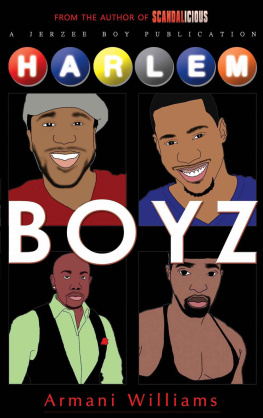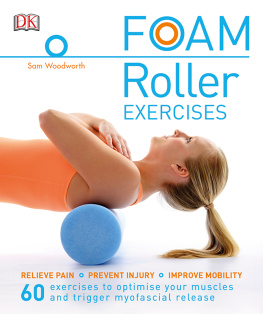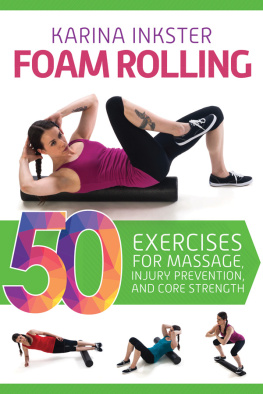THE FOAM ROLLER BIBLE
FOAM ROLLING
SELF MASSAGE, TRIGGER POINT THERAPY & STRETCHING
*Third Edition*
CHASE WILLIAMS
2016
COPYRIGHT NOTICE
All rights reserved.
No part of this publication may be reproduced, distributed, or transmitted in any form or by any means; including, photocopying, recording, or other electronic or mechanical methods, without the prior written permission of the publisher, except in the case of brief quotations embodied in critical reviews and certain other non-commercial uses permitted by copyright law.
DISCLAIMER
This book is not intended as a substitute for the medical advice of physicians. The reader should regularly consult a physician in matters relating to his/her health and particularly with respect to any symptoms that may require diagnosis or medical attention.
Although the author and publisher have made every effort to ensure that the information in this book was correct at press time, the author and publisher do not assume and hereby disclaim any liability to any party for any loss, damage, or disruption caused by errors or omissions, whether such errors or omissions result from negligence, accident, or any other cause.
CONTENTS
INTRODUCTION
While foam rolling, the use of rolls of foam, has been around for quite a while; until recently it has been seen mostly as a mysterious technique used by professional athletes, coaches, and therapists to help increase mobility and overall muscle tone. These days, however, it can be found in gyms, in use on television and in homes across the nation, with more people seeing the benefits of foam rolling every day.
The problem is that, while most people have seen and heard of foam rolling, many still do not know how to use it or what it is even supposed to do. Unless you have your very own therapist trained in foam rolling techniques, or you are a professional athlete with a guru teaching you the methods and benefits of foam rolling, you probably also have many questions pertaining to foam rolling, as well. I assume that is the reason you are reading this book now.
That is the reason I wrote this book - to show the average Joe (or Jolene) the best possible methods for foam rolling, right in your own home. You would probably pay a professional hundreds of dollars for what you will learn in this book and even then they probably still wont even teach you half of what you will discover herein. Not only will you learn the best exercises for foam rolling, but you will also learn what these exercises do, and why you should be using them.
I have tried my best to keep the language in this book easy to understand, and stayed away from the more specialty words, such as medical jargon and technical terms. Where such words and language are used, I have tried to explain them in an easy to understand manner. If you do come across something in this book you simply cannot understand, I highly recommend you look it up online to increase your knowledge and understanding.
To start off with, this book will introduce you to a brief history of the foam roller and how it came to be such an integral part of many people's lives today. You will discover just why so many people seem to be drawn to this simple foam rolling device and why so many athletes, coaches, and trainers are beginning to incorporate it into their practice.
After you have gotten a handle on the basics, you will learn just what myofascial release is all about and how it pertains to these rolling exercises. Although self-myofascial release may sound like so much technical gobbledygook, you will find that (as it pertains to foam rolling) it is more or less just a fancy way of saying self-massage. Well discuss what the fascia is and how it works, as well as how to release fascial adhesions (or knots) so that you are not just doing the exercises but you know why these exercises are helping you, which is always a plus.
If you are a runner, weve included a chapter about why foam rolling should be a vital part of your running routine and why stretching exercises alone may not be enough, indeed they may even be detrimental if you are stretching prior to running. By utilizing foam rolling, you can help keep your ligaments and muscles from becoming stiff and rigid as well as minimizing trigger points that often come from overworked muscles.
Well discuss trigger point therapy using the foam roller, in order to give you a more thorough understanding of what trigger points are and why it is so important to your health to release those trigger points. While this book doesnt go into too much detail about trigger points, I have recently written a book on the subject. This was due to feedback from the first edition of the foam roller book. I have also tried to expand the trigger point area of this book in this edition, though I would recommend reading The Trigger Point Bible in order to get a more thorough understanding of this problem and the treatments available for it.
Another area we will touch upon in this book is incorporating foam rolling into your yoga routine. You will find that by incorporating the foam roller into the many different yoga poses, you can achieve a much better result than you would by simply doing the yoga poses by themselves. We will discuss how to do this as well as give a few examples to get you started. Once you understand the basic concepts of incorporating the foam roller into your routine, I have no doubt you will discover endless ways you can use it to get the most out of every yoga session.
Toward the end of this book you will find how foam rolling can not only make you feel much better and increase your mobility, but also aid in staving off many age-related ailments such as arthritis and bursitis and other problems that are all-to-often chalked up to just getting old. Well discuss how you can even reverse the effects of some ailment by rolling on a regular basis effectively rolling back the years.
Ive also included a brief description of the many different foam rollers available to help you decided on the one that is perfect for you (if you havent already bought one yourself). I do recommend, however, that if you are just beginning in foam rolling you go with the softer more pliable foam rollers. Once you have been rolling for a while, you can move on to the firmer (and often more painful) rollers out there. If you are working with Trigger Points, it is often beneficial to use both a soft roller for rolling out most trigger points and a firmer foam roller for getting the more intensive trigger points released.
I highly recommend you read all the way through this book and dont skip any of the earlier chapters, as a background on the rollers and self-myofascial release will help tremendously in understanding these exercises and how they can help you in different ways. You can, of course, choose to skip over the brief history, but you may find it fascinating, or at the very least educational, so the next time you are at the gym you can show off your above-average knowledge.
Even if you are not a professional athlete, you will find foam rolling can be of much benefit in your daily workout. It can help you before and after exercises and even if you dont exercise, you can still gain many benefits from proper foam rolling. The key word here is proper as many people who have tried foam rolling and have subsequently given it up were simply not doing it correctly and were therefore not seeing any benefit.
Unfortunately many books, videos, and guides have been written with incorrect foam rolling techniques that can actually do more harm than good. Rest assured, however, that the methods provided in this book are tried and true methods, tested and approved by athletes, runners, bodybuilders and trainers. The exercises presented herein are easily learned and mastered and you will notice an immediate improvement in your muscle tone and joint range of motion.













